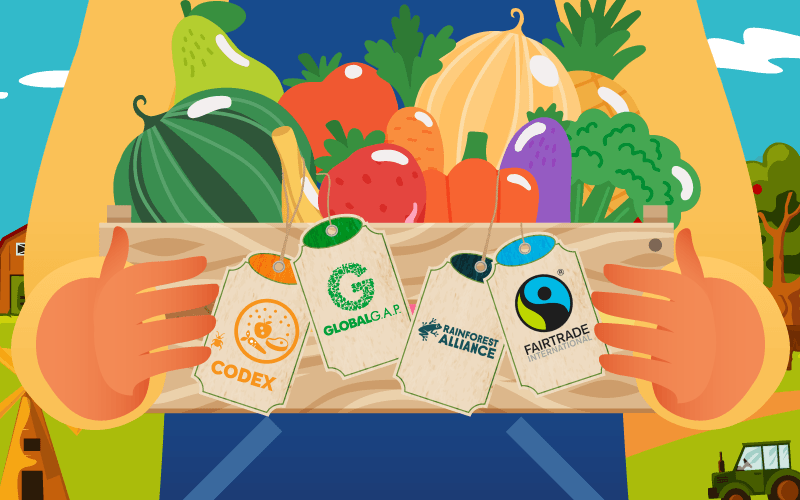Author: Javier Fernández, Legal Advisor and Director of Regulatory Affairs, jfernandez@www.croplifela.org
April 2021
More than ever, the growing world population demands safe food and expects it to be produced in a sustainable way. To do so, agriculture must be economically and socially viable, as well as environmentally friendly. But at the same time, agriculture has been pointed a major contributor to global loss of biodiversity. The interaction of agriculture and biodiversity will be discussed next September during the United Nations Summit on Food Systems, part of the Sustainable Development Goals agenda.
One way to meet the expectations of agricultural production is through standards. Some of them are official. For instance, the Codex Alimentarius operated by FAO and WHO, or a national pesticide residue monitoring program. Producers also meet expectations for their way of farming in a voluntary fashion. With support of unions or cooperatives, farmers manage programs to certify their production. For example, Blue Harvest is a seal for the conservation of water resources in Central America. Led by Aapresid in Argentina, Certified Sustainable Agriculture is another seal about Good Agricultural Practices (GAP).
The agricultural value chain offers a third way of applying production standards. Private entities develop compliance guidelines, certify producers and audit their compliance. Such is the case of GlobalGAP, Rainforest Alliance or Fair Trade.

Private Standards
Private standards are useful for aspects of sustainability such as the preservation of ecology (i.e. prevent expansion into forests, water management, buffer zones or integrated pest management) or improve working conditions (i.e. living wages, child labor, working conditions, maximum hours or gender). Not surprisingly, agricultural certification schemes have proliferated, both geographically and thematically.
Compliance with these private standards is a challenge for farmers. Voluntary in appearance, adherence to standards increasingly becomes a condition for market access, not to say a barrier. The vast array of non-harmonized standards and markets that are requiring certification escalate the issue. Against this background, farmers may encounter as many certifications as possible customers. Those standards can also be conflicting, adding complexity to compliance.
An additional problem is that the farmer usually ends up footing the cost of certification without a chance of recouping the cost incurred through a premium in their crop. The hike in production cost must be compounded to those intrinsic to production, such as access to land, credit, supplies and insurance.
Perhaps the deepest problem with private standards is when they stop helping sustainability and become a marketing tool. This happens when powerful player in the value chain, such as intermediaries and retailers, use standard seals to attract consumers. Known as green washing, this practice is quite distant from agriculture realm and sustainability.
An example of green washing takes place in certain approaches to crop protection products. Used properly according to label instructions, pesticides are a cost-effective tool for pest control. In some instances, they are the only effective tool available due to concoction of agroclimatic conditions and type of pest pressure. However, more and more certification guidelines impose pesticide blacklists. Either to appease activists or to herd consumers to a certain supermarket chain, this trend may agriculture and farmer wellbeing and not precisely in favor of sustainability.
Just like there are agrochemicals with toxicological or environmental profiles that require closer scrutiny, there are also useful mitigation measures to reduce their risk: Buffer zones, application hour restrictions, or re-entry periods to fields for operators are some examples. If, an unacceptable risk to health or the environment remains despite application of mitigation means, use prohibition may be the last resort. However, several private standards are inclined to frontload use prohibition to cope with marketing strategies that allege sustainability. Depriving farmers of pest control tools without effective substitute mechanisms draws significant gaps in the value chain.
Although certification guidelines include public consultation for transparency purposes in their making, favoring commercial interest over sustainability erodes their reputation.















